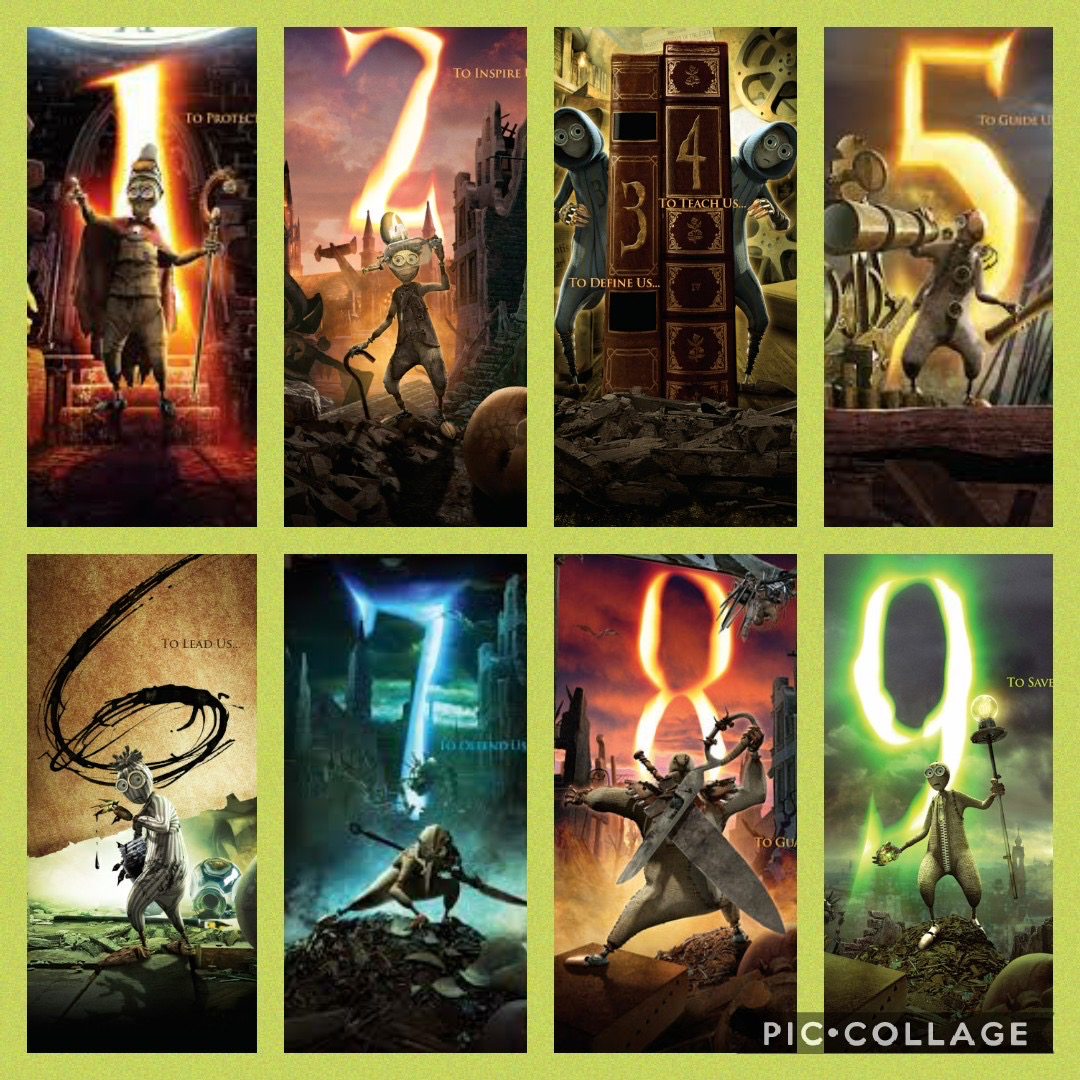Short film: The first thing we noticed was the quality of the film. It’s almost as if you’re filming with a camera whose lens is dirty. The poor quality, paired with the low lighting, was almost hard to watch. It was hard to see the characters at times, especially since they were carrying around a mere bulb they took from a lamp, and the sun was never out. The lighting goes with the genre, but it’s hard to understand what you can’t see. The film is also quite confusing on its own. The story follows a rag doll,9, at what appears to be the end of the world. A metal monster with one glowing green eye seems to want the souls of the rag dolls. During the short film, we don’t actually find out who the monster is and why it wants nine dead. Despite being made of cloth, the rag dolls seem to have a lot of emotion on their face. When five is killed, nine looks devastated and can be seen sulking, looking at the last thing he got from five not long after. Despite being a shorter film, it still has a good amount of media conventions. There were clips filmed at low angles to depict how tiny nine is compared to the world or how small he felt compared to the monster. There were panning shots to show him running away too. There was also a panning shot where the camera rose from a low angle to higher up the monster’s back, where it showed the cloth from five on him shortly after he defeated him and took his soul. Regarding the mis-en-scene, the characters didn’t wear clothes as they were rag dolls, so the directors focused on the background instead. There were a lot of old broken items, like a huge doll whose face appeared cracked, and items discarded in random areas, like the umbrella opened upside down. Almost all buildings were destroyed, and the sky looked murky and foggy to enhance the apocalyptic aspect. The diegetic and non-diegetic sounds were ominous from the start, with the film opening with an eerie-sounding background track adding in diegetic sounds such as the hammer clicking or the monster walking louder than the music to create more or a freight aspect. Lastly, we had the transition animations. Other than the quality, this is how you could tell it was a short film. The transitions were poor, resembling that of a PowerPoint presentation. There were some good ones, however, such as the clip where nine was cleaning the gadget in the beginning, and it flashes as if the light next to him flashes and pans from the gadget to his eyes to an extreme close-up and switched to a flashback of the first time five gave him the gadget. Overall this short film was not the best. The quality and transitions were poor, and the audience was barely given any context as to what was happening, so it was confusing.
Full-length film: We immediately noticed the huge improvement in camera quality compared to the short film. The characters are much better drawn, making them way more visible. There’s also a wider range of characters. In the short film, we only saw all the Stitchpunks at the very end, but in the full-length, we see them all pretty early on. We finally see the scientist who created them. The full-length film is more detailed, giving us the full history of the dolls. We see why nine was created, who and where the others were, what caused the mass robot takeover, and what the glowing mystery device was. We also see the conflict between the Stitchpunks and the robots and between the Stitchpunks and each other. This developed the backstory of why five and nine were close while the others were absent from the plot. The full-length movie had relatively the same camera angles as the short film. It did, however, have more overall conventions. Regarding mis-en-scene, while not all the ragdolls were dressed, they had something significant to them. Number one wore a cape and a huge hat to assert dominance or dub himself the leader, with number eight being the personal guard. Number eight was bigger and had a huge sword. Number six had the paintbrush and psychic powers, which made him a little strange. Overall, the full-length film is much better. Due to the budget increase, new equipment, and new directors, the potential of the film increased, making it better than the short film.
Comparison: The quality of the full-length film is much better than the short film. We could see the characters clearly, and the background didn’t look blurry. The full-length film was also much more detailed. The short film only gave us a piece of the plot, whereas the full-length film gave us the full history of the dolls, including how they came to be, why the world looks the way it does, and what the little trinket they carried was and why they were fighting metal creatures. The short film started towards the end of the conflict, almost as if it only showed the movie’s last few minutes. Since it didn’t introduce the conflict at all, it was more intriguing as it kept the viewers wondering what was happening. The problem with this is that the storyline was hard to follow because the viewers had no idea why nine was in what looked like a junkyard and why he was being targeted by a soul-sucking robot creature. Overall, the full-length movie was better because it’s more detailed, better quality, looked more professional, and has a wider range of camera angles, locations, characters, and other media conventions. There was a bigger budget for the full-length film, so they had more filming and editing equipment, which is why they could do higher or lower angles and make the transitions smoother.







